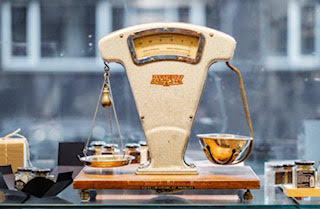Below is my blog post for Huffington Post, “I’ll have a medium soda”–Why current size labels can be deceptive. You can also read it HERE.
As a nutrition researcher tracking portion sizes and labels manufacturers use to describe such sizes, I have seen food portions not only grow larger over the years, but the labels to describe foods and drinks have also changed.
For example, when McDonald’s opened in the 1950s, the company offered one size soda, which was 7 ounces; today’s 12 ounces is labeled a kid’s size and the 16-ounce is labeled small. Similarly, when Burger King opened, the company offered a 12-ounce small and a 16-ounce large soda. The 12-ounce is no longer sold and the 16-ounce comes as part of the value meal. Burger King’s small soda is now 20 ounces, the medium is 30 ounces, and the large is 40 ounces.
Does anyone pay attention to these label descriptors? And do they influence how much we really eat? Apparently yes, according to a new study published in Health Economics by Cornell University researchers David Just and Brian Wansink.
The study found that labeling a food as “regular” or “double size” affects how much consumers will eat, regardless of how big or small the portion size actually is.
The researchers served subjects two different portions of pasta in either a one cup-portion or a two-cup portion. For some of the subjects, the two different size portions were labeled “half-size” and “regular.” For the other subjects, the identically-sized portions were labeled “regular” and “double-size.” The labels for the first group of subjects indicated that the two-cup pasta portion was the regular size, while it was suggested to the second group of subjects that the one-cup pasta portion was the regular size.
The study concluded that varying the “regular” portions affected how much the subjects actually ate. Subjects ate more food when the portion was labeled “regular” than when it was labeled “double-size” despite the fact that the two sizes were actually the same size.
The subjects were also willing to pay more for a larger sounding portion size.
As reported in newsLI.com, “These varying concepts of ‘regular’ portions made all the difference in how much people would spend and subsequently eat,” said Just. “Participants ate much more when their portion was labeled ‘regular’ than when it was labeled ‘double-size.’ In fact, participants who thought their portion was ‘double-size’ left 10 times the food on their plate.”
How does this study affect those of us who typically eat out at eateries that offer foods and drinks in different sizes? The chart below shows the sizes of fast food soda portions at top fast-food chains.
McDonald’s
Kids 12 oz.
Small 16 oz.
Med 21 oz.
Large 32 oz.
Burger King
Value 16 oz.
Small 20 oz.
Medium 30 oz.
Large 40 oz.
KFC
Small 16 oz.
Medium 20 oz.
Large 30 oz.
Mega Jug 64 oz.
As you can see, the benign sounding “medium” soda is actually quite large. McDonald’s medium portion is 21 ounces (a pint and a half) and Burger King’s medium soda is 30 ounces (nearly a quart). But because these items are labeled medium, customers may consider themselves virtuous by not ordering the large, and may in fact order a medium order of fries to go with the soda.
My advice: Next time you visit an eating establishment that sells food in several sizes, I suggest ordering the small. Unless, you are visiting a Starbucks where the small is labeled tall.




